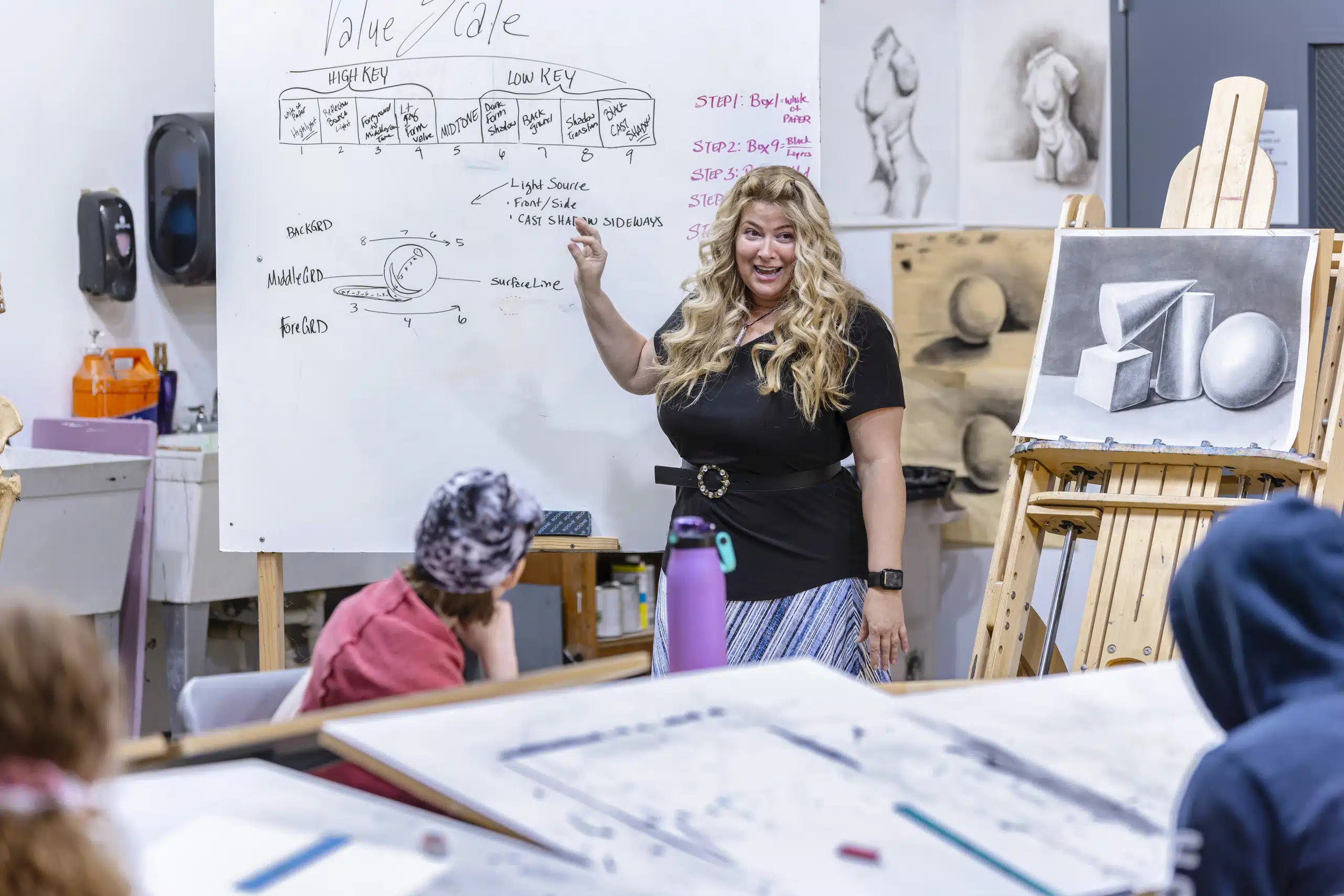Art Education P-12 Program Features
At Kentucky Wesleyan, the Art Education program combines artistic mastery with teaching expertise. You’ll study drawing, painting, ceramics, sculpture, and digital art while also completing coursework in educational theory, child development, and teaching methods. Faculty mentors provide personal guidance as you build your artistic skills and prepare for classroom leadership. Engaged learning opportunities include student exhibitions, workshops, and field experiences in local schools, ensuring you are classroom-ready before graduation. Our program emphasizes portfolio development, lesson planning, and effective instructional strategies that reflect best practices in art education. By the time you complete your degree, you’ll not only have the skills of a practicing artist but also the confidence, certification, and preparation to inspire creativity in the next generation.yes
Career Paths
P–12 Art Teacher – Licensed art teachers inspire creativity and critical thinking in elementary, middle, and high school classrooms. They develop engaging lessons in drawing, painting, sculpture, and digital art while nurturing students’ artistic growth.
Museum or Community Arts Educator – These educators design and lead programs that connect diverse audiences to art. They work in museums, galleries, and community organizations, fostering creativity through workshops, tours, and outreach.
Curriculum Specialist – Curriculum specialists shape art education programs by designing instructional materials, integrating technology, and aligning lessons with educational standards. They play a key role in improving teaching quality and student outcomes.
Arts Administrator – Arts administrators manage arts organizations, schools, or community programs, overseeing budgets, programming, and staff. They ensure that the arts thrive in educational and cultural institutions.
Graduate Study in Art or Education – Many art education graduates pursue advanced degrees in art, curriculum development, or educational leadership, opening doors to careers as professors, education policy leaders, or master teachers.
Art Education P-12 Program Requirements
The Art Education major requires approximately 65–67 credit hours, integrating studio art, art history, and education coursework. Foundational art courses include Drawing I, Two-Dimensional and Three-Dimensional Design, and Art History I & II. Advanced courses in Painting, Sculpture, Ceramics, and Digital Art expand technical mastery, while Art Education Methods, Educational Psychology, and Classroom Management provide essential teaching skills. Students must complete student teaching experiences in P–12 classrooms, where they apply their learning in real school settings under faculty supervision. A senior exhibition demonstrates artistic development, while a teaching portfolio highlights classroom readiness. This rigorous program ensures graduates are prepared for licensure and equipped for successful careers as art educators and leaders in arts education.



